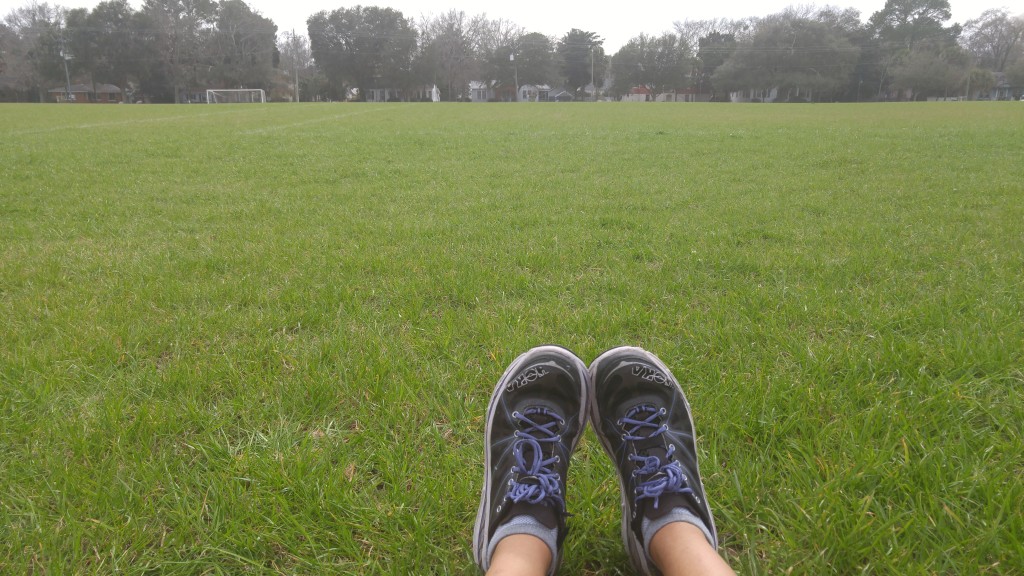This week I picked out my fall marathon training plan. My current fitness and running mileage base played crucial roles in my decision.
I remember when I was newbie I had a lot of questions about building a running mileage base. I understood following training plans for specific races, but did not know how to grow and progress between training plans. Here are some things I’ve learned over the years.
Building a Running Mileage Base
What is a running mileage base?
For the typical fitness runner, a mileage base is how much you run when you’re not in a training program for a specific race or distance. For new or getting-back-to-running runners, building a base can simply mean running routinely week after week. For consistent runners, a running base can include key workouts like long runs or tempo runs.
~50 miles a week with a long run, hill repeats, and a speedwork day is an example of running base. 12 miles a week at one pace divided into 3 runs is also a running base.
How many miles?
When you train, what distance are you training for? Someone who wants to race marathons will need a higher mileage base than someone who wants to race 5Ks. You may find some guidance with this article on target miles (Runner’s World).
To narrow down a large range, consider your experience with different mileage and how it made you feel. I find myself defaulting to 25-30 miles/week. That feels good to me and it’s doable with my schedule. Figure out what feels good to you, what fitness level you require of yourself, and what your body will allow.
Consider how many days
How many days a week have you run before? Think about your schedule and when you can best fit in you runs. Some people have trouble increasing mileage, and others have trouble increasing days. Knowing if one of those causes more problems than the other can be helpful as you work toward increasing your overall mileage.
For me, I know that 3 runs/week cannot support my long run, or my sanity. Getting to 5 days a week was more of a challenge than I imagined, and remains a challenge.
Don’t pile on the miles too fast
The golden rule of increasing your mileage is not to do it too fast. Don’t go from 0 to 20, or 20 to 50 miles. The general recommendation is no more than 10% increase from last week.
It may feel like victory at the end of a week where you doubled your miles, but your body won’t recover efficiently and you may find yourself worse off.
Also, include cut-back weeks. Cut-back weeks of decreased mileage will allow your body to recover while you’re still running miles. It will give you the strength to keep increasing your mileage consistently. Common cut-back frequencies are every third or fifth week.
Add a key workout
If you’re a consistent runner, consider replacing one of your steady runs with a key workout, like a long run, tempo run, or other type of speedwork.
Remember your long run should not account for too much of your weekly mileage. I’ve heard many ratios on this, but for me 50% is definitely a red flag. If you want to run a 10 mile long run, you need other runs during your week to support it.
Pre-fabricated plans or DIY
There are plans out there you can follow to gain mileage and build your base. However, if you’re already using plans to train for specific races, I think base-building is a great time to develop a personal plan using the training principles you’re learning.
An easy way to do this is to look at Week 1 of a plan you want to use in the future, then work backwards filling in your calendar. For example, if you want to use Hal Higdon’s Novice 2 Marathon Plan, you would want to work toward running 4 days a week and 8-10 miles long runs. Write a plan to get you from point A to point B.
Even me, who likes plans and to-do lists needs a break from following pre-fab training programs. I like to pencil-in a running plan of my own. There is no pressure to follow it if it stops working for me. It gives me an ebb to the flow.
If you find yourself struggling to increase your mileage or stay consistent, you may be making training errors. A custom training plan developed by a running coach might help you over those hurdles.
Safely building mileage by following training principles and listening to your body is the mark of a mature runner. Build your base and grow.
Further reading
- Runner’s World: How Many Miles a Week Should I Run?
- Competitor: The 10 Percent Rule – Fact or Fiction?
- Competitor: How to (Finally) Run More Consistently








Great tips! I definitely agree with adding a tempo or some type of specific running work out. I honestly look forward to them the most! When I’m in training I usually run 30-50 miles a week depending on how far into the cycle I am. If not training, usually 25-30 miles a week. I’ve been slacking since my last marathon a few weeks ago tho. Time to get back into it!
Tempo or other specific workouts are fantastic for fitness, but also motivation. I agree, just knowing that I’m going out there for something different on Wednesdays helps the entire week.
It always surprises me how long I need to mentally recover from a training cycle and race.